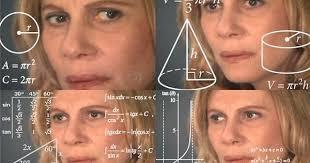Quantity decisions? Not a Quantum problem!
It’s gonna happen. Someone you work for (or maybe even yourself) had a ‘GREAT IDEA!’ moment aaaand you’ve just been tasked with ordering shirts for an event. That could be a ‘Team Spirit Casual Friday’ or a ‘Family Reunion’ or possibly ‘The Concert of the Century‘. No matter what it is, people are going to want to buy a shirt because they need a place to invest that memory or support, and remember the bomb times they had doing or seeing whatever the thing was that you helped put on or out and they loved. You have artwork; check! You have shirt styles nailed down; check! Now for the unknown- How many shirts do you order?

A question of the ages. In ancient times we found this number by doing rain dances, consulting dead animal bones, and navigating what stars would be overhead while people wanted T-shirts. Lol just kidding (but in all seriousness I have witnessed this by bands reordering merch on Warped Tour [RIP Warped Tour]). Secret ingredients! We’ve consulted with other print shops and found a pretty good ratio that reads like a finely crafted Old Fashioned:
1 Part Small
2 Parts Medium
2 Parts Large
1 Part X-Large
.5 Parts 2XL and beyond.
To craft an order for 100 adults, it goes like this:
15 Smalls
30 Mediums
30 Larges
15 X-Larges
10 2XL’s
These quantities work out for a general audience, but there are variables. Consider these things:
A) What’s the demographic for this event or brand? Sumo Wrestlers or Cyclists? Dead lifters or Gymnasts? Be honest about it.
B) What garment are you selling? T-shirts? V-Necks? A group with a message of modesty may want to size up so you should accommodate those numbers accordingly.
C) Have an event with littles? We do have a size breakdown for kids as well. Consult one of our client reps for this!
Another solution– Have an event and want to take the guess work out entirely? We can help with that by printing on-site for you. An approach like this will also help you with future in-house orders by giving you a feel for what your clients would like.
Quantity questions don’t have to be quantum questions. Let us help you out today!



